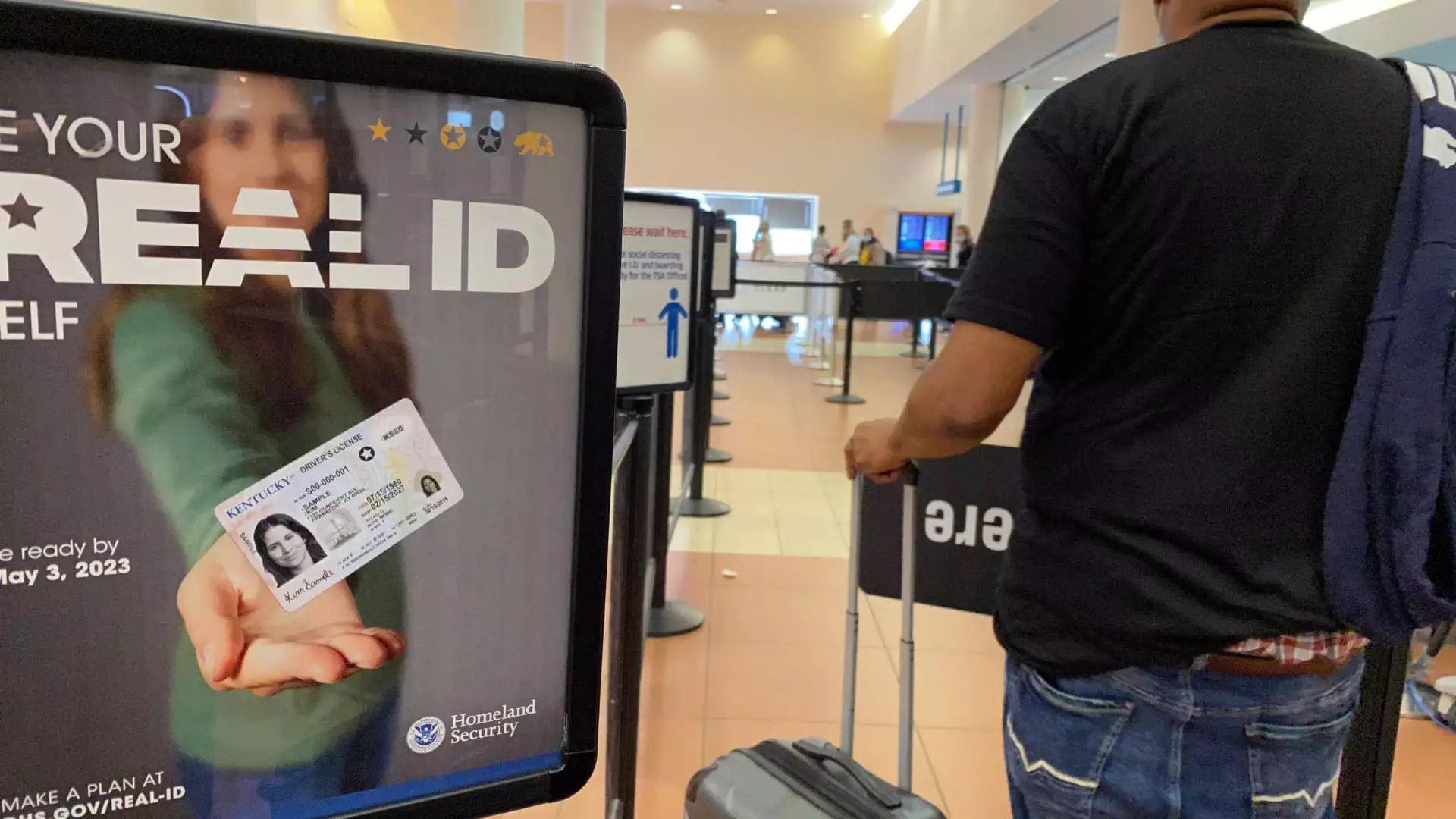The looming enforcement of the Real ID requirements by the federal government raises serious questions about the effectiveness of these measures in enhancing national security. Set to take effect on May 7, these regulations mandate that all travelers present a Real ID-compliant form of identification before boarding domestic flights. The troubling aspect here is that this measure was born out of the chaos following the September 11 attacks, where inadequate checks on state-issued IDs contributed to the disaster. Yet, despite nearly two decades since the tragedy, reliance on an ID framework, so easily manipulated, feels outrageously simplistic. We must ask ourselves: Is the Real ID system merely a band-aid over a more profound wound in national security protocols?
The Reality of Compliance
A somewhat concerning statistic released by the Transportation Security Administration (TSA) indicates that only 81% of travelers currently possess Real ID-compliant identification. While that figure might seem respectable on the surface, it highlights significant disparities among states and their respective readiness for this enforcement. The fact that 19% of travelers are potentially unprepared for this crucial requirement, coupled with the scarcity of appointments at motor vehicle departments to update licenses, paints a picture of systemic failure that we cannot ignore. It’s as if the government has set up a goalpost while simultaneously holding back access to necessary resources for many. The questionable timing of the government’s warnings also warrants scrutiny. Proactive outreach about these requirements has been sporadic at best.
Incessant Delays and Frustrations
Travelers have already experienced the frustration of long security lines, and this new mandate is poised to exacerbate these delays even further. Telling people to arrive three hours early for a domestic flight feels absurd, especially when most travelers are treated as guilty until proven innocent by security protocols. It raises important questions about logistical feasibility: how can we expect to have smooth operations at busy airports when we add yet another layer of complexity to the identification process? Such delays diminish the overall travel experience and put undue stress on both passengers and airport staff. Are we creating a scenario where passengers are subjected to punishment for the government’s delays in implementing efficient identification standards?
An Invitation to Chaos
What is particularly alarming is the potential for chaos when the enforcement deadline hits. TSA’s Carter Langston has warned about “additional screening” that could prevent passengers from getting past security checkpoints if they fail to provide acceptable identification. This not only disrupts travel plans but opens the door for severe emotional and financial repercussions. Does anyone genuinely believe that travelers who are rushed and anxious will comply with security protocols effectively? The stakes are undeniably high, and as we saw during the pandemic, there’s little room for compassion when faced with bureaucratic red tape. We are potentially inviting an unnecessary wave of chaos into our already fragile systems.
Real ID: A False Solution?
One cannot overlook the hypocrisy embedded within Real ID compliance, which claims to offer an additional layer of security without fundamentally altering the problems it’s supposed to solve. Yes, identifying passengers is essential, but why should we lean on a measure that can easily be circumvented? For countries that have higher standards of security verification, the U.S. appears to be lagging behind. A card denoting compliance—an arbitrary gold or black star—won’t stop a determined individual from committing unlawful acts. Perhaps the focus should shift from merely enforcing ID requirements to reassessing the entire framework within which we ascertain the safety of our airline passengers.
In essence, while the government is pushing for a deadline to enforce Real ID, the approach feels akin to putting up a façade of security rather than addressing real vulnerabilities within our systems. It seems we might be treating the symptoms while ignoring the actual malady affecting airport security – a misguided belief that bureaucratic compliance equates to genuine safety. As travelers approach the May 7 deadline, the pressure mounts, and so too does the realization that we deserve more than just band-aid solutions to complex security challenges.

